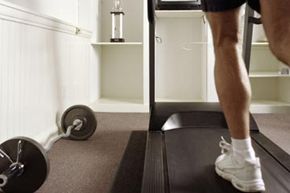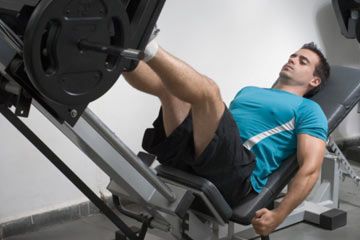Does it seem that the training exercises you did in the past just don't work so well for you anymore? If so, whether you run marathons for a living or you do the 100-meter dash for your school's track team, circuit training may be able to give you an edge. Not to be confused with interval training -- which we'll take a look at shortly -- circuit training simply structures your workout to incorporate bursts of resistance exercises targeting several specific muscle groups, with alternating layers of sprints or laps between each exercise set.
Think of each circuit training set as a 15-story office building where you start on the first floor and work your way up to the top. Your warm-up jog or run is the first floor. Once you get your heart rate elevated and your muscles primed, you move to the second floor where you'll do several sets of one resistance exercise. Then you stride to the third floor where you'll sprint or run again, and so on. The odd-numbered floors are your running intervals and the even-numbered floors represent your weight-bearing exercise stations. In a circuit training workout, you'll advance to different groups of resistance exercises, separated by sets of laps, to build strength.
Advertisement
Some of the benefits you'll find with circuit training include preventing injuries and improving balance, because the resistance part of the training keeps the muscles, ligaments and tendons in shape and in harmony, which we'll learn more about later in this article. Another plus is that, if you tend to get bored with the same old regimen, circuit training can put spice back into your exercise life, because you're constantly mixing up your combinations of exercises to challenge your body.
With circuit training specifically for runners, you tailor your exercise regimen for your event or conditioning goal, whether that means increasing speed, losing weight or elevating endurance. Properly preparing for a race by using circuit training may even improve your race-day performance rather than simply maintaining your personal record.
Up first, we'll take a look at some examples of workouts you can use at the gym.
Advertisement



